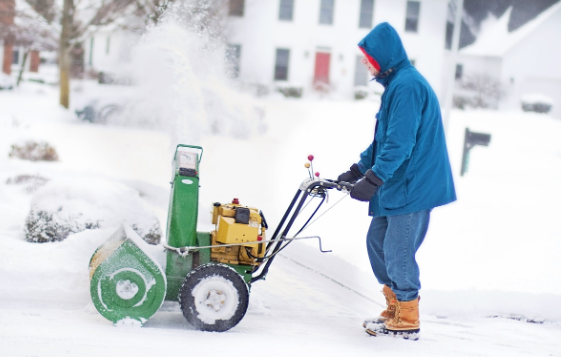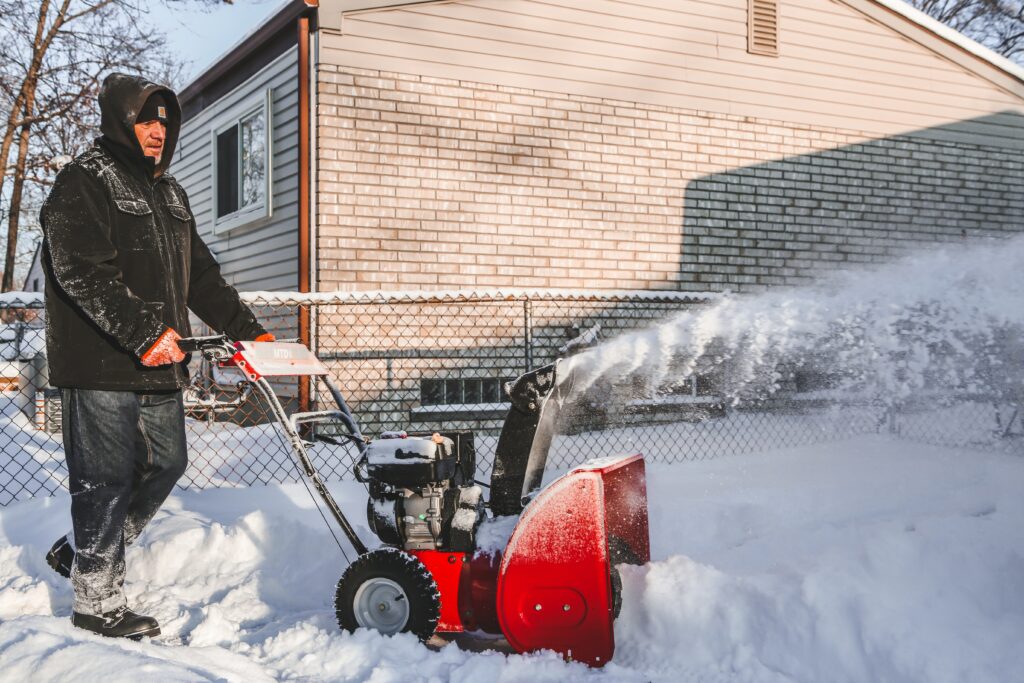How to Use a Snow Blower Effectively
Few things rival the serene beauty of freshly fallen snow – that is until the task of clearing it becomes a reality in the chilly outdoors. As temperatures begin to plummet, now presents an opportune moment to explore snow removal methods. While you might consider reaching for a traditional shovel, opting for a snow blower is a wise long-term decision. Given the weightiness of snow, a machine proves to be far more adept at its relocation than human effort alone. Beyond their enhanced speed and efficiency, snow blowers significantly reduce the strain on your back – a compelling reason to endorse them. While grasping the concept of using a snow blower might appear straightforward, it’s imperative to acquaint yourself with the process before embarking on the task. This article will provide you with a guide on how to use a snow blower effectively.

Preparing for Snow Removal
Before beginning work on your driveway, familiarize yourself with the controls of your machine. Learn how the device is propelled forward and backward, how the drill is engaged, and locate the speed controls and adjustments for changing the discharge chute’s direction.
Examine the Equipment

Thoroughly inspect your snow blower before use, especially if it’s the season’s first use. Pay particular attention to the following key components:
- Belts
- Shear pins
- Skid shoes
- Tire pressure
- Oil level
Prepare the Equipment
After conducting an inspection, ready the equipment by following this checklist:
- If you stored the equipment with an empty fuel tank, fill it up. Unless otherwise instructed, exclusively use gasoline that is 100% ethanol-free.
- If there was fuel left in the tank from the previous year, drain it before adding fresh fuel.
- Adjust the skid shoes according to your surface. Lower the shoes for ample clearance between the auger and gravel when blowing snow from a gravel driveway. Raise the skid shoes for a more precise pass on concrete or pavement.
- Apply wax to the inside of the discharge chute to minimize the potential for clogs.
How to use a Snow Blower effectively
Step 1: Strategize Your Path
The first step is to determine where you want the snow to land then plan your route with this goal. Always position the chute to direct the discharged snow away from homes, vehicles, and individuals.

If you intend to create snow piles on both sides of the driveway, beginning in the middle and working outward is a practical approach. Alternatively, if you prefer a single snow pile, initiating from the opposite side and progressing towards the rise will be the most efficient route.
Step 2: Prepare the Area

Before starting your snow blower, ensure the area is ready by clearing away any sticks, rocks, or other debris that could potentially damage your blower or pose a safety hazard to you or others. Despite your ability to control the snow blower’s ejection direction, foreign objects like rocks can be propelled beyond your target area.
Step 3: Don Safety Gear
Before operating your machine, don the necessary safety gear. You must wear safety glasses and ear protection while you likely have your winter gloves on.
Step 4: Maneuver the Snowblower
You need to put the snowblower at the starting point of your path and engage the auger. Then, you initiate slowly until you become accustomed to the process, and maintain the slow pace if the snow layer measures over 7-9 inches. As your familiarity with operating the blower grows, gradually increase the speed.
Helpful Tip:
When faced with heavy snowdrifts that may exceed the capacity of standard homeowner-grade snowblowers, work in a manner that removes only a tiny amount of snow in each pass, and if necessary, make multiple passes. Boost the engine speed for denser snow while keeping the ground speed low.
Step 5: Store the Snowblower
Between uses, you must thoroughly dry the machine to prevent rust formation before storing it. Before each service, inspect the listed components. You need to use a fuel stabilizer to maintain the quality of the gasoline.
At the end of the season, follow these storage protocols to ensure your machine’s readiness for the following season:
- Wash and meticulously dry the engine, addressing any rust spots. Eliminate rust using a wire brush and sandpaper, then apply a rust preventer to the affected area.
- Adhere to all manufacturer’s recommendations for lubrication and proper storage procedures.
- Safeguard your engine by treating it with fogging oil to shield components during storage.
- Store the snow blower in a sheltered location after draining the gasoline.
When is the best time to snowplow?

Effective snow blower usage relies on two critical factors: timing and technique. Begin snow blowing when the snow accumulation is a few inches deep to minimize strain and gain better control. Organize your snow removal pattern systematically, like mowing a lawn, and avoid letting snow sit for too long to prevent added difficulty.
Where you deposit excess snow matters, too; avoid piling it against your home’s walls and foundation, and keep the driveway’s end clear to reduce accumulation when snow plows pass. Finally, choose the right snow blower type based on the depth of snow you typically face, with single and two-stage models for lighter accumulations and three-stage for more significant depths. Smaller tools like brushes and grit can also help with lighter snow or icy surfaces.
Varieties of Snow Blowers: Electric and Gas-Powered Options
A diverse array of snow blowers and their features are available. The initial choice to address is whether to invest in a gas-powered snow blower or opt for an electric counterpart. Your decision should be guided by the extent of the area you intend to clear.
For instance, a gas-powered model might be preferable if you possess an extensive driveway, as it won’t be constrained by cord length. Conversely, electric snow blowers, remarkably those devoid of cords, are an excellent selection for smaller spaces. These models are lightweight, easily maneuverable, and compact enough for convenient storage. Their maintenance is hassle-free, as they don’t necessitate oil and gas. If alleviating physical strain is a key objective, an electric model should be considered.
Final thoughts
How to use a snow blower – that’s the key to efficiently removing snow from your property! When you Remember these snow-clearing pointers, you’ll be on the right track. Now, it is time to venture outside and begin the process of clearing that snow!
Related Articles